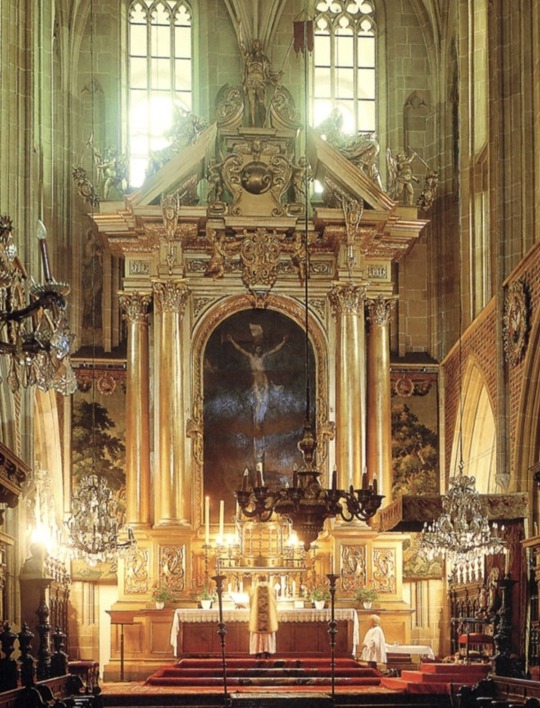#wawel cathedral
Photo


Royal Archcathedral Basilica of Saints Stanislaus and Wenceslaus in Kraków, Poland.
20 notes
·
View notes
Text
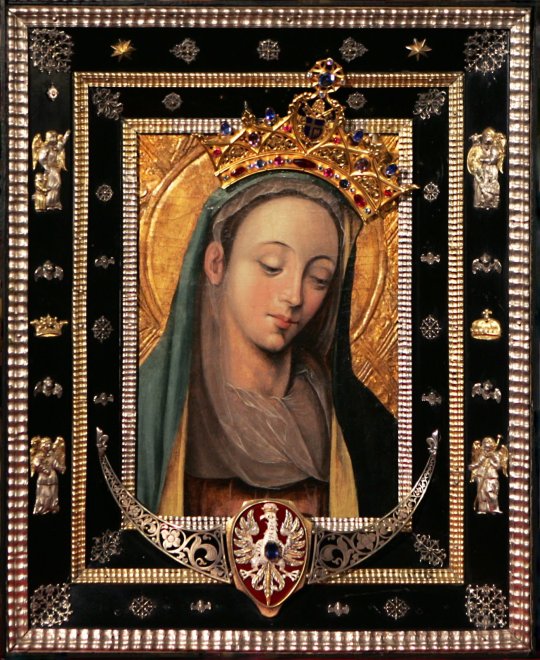
The Miraculous Image of Our Lady of Rokitno Patiently Listening, 16th century, Poland.
Solemnity of the Blessed Virgin Mary, Queen of Poland
On August 14, 1608, Fr. Giulio Mancinelli, an Italian Jesuit, experienced a vision of the Virgin Mary who asked him: "Why don’t you call me the Queen of Poland? I love this kingdom very much and I intend great things for it, because his sons are burning with a special love for me". O. Mancinelli told the superiors of the order and the Polish Jesuits about his vision. Subsequently, the church authorities established a commission to investigate this revelation, which after a year issued a judgment about its truthfulness. It was then that Fr. Giulio, despite his 72 years of age, began a pilgrimage on foot to the country Mary spoke of. At the Wawel Cathedral, on May 8, 1610, Our Lady appeared to him again, saying: "I am the Queen of Poland. I am the Mother of this nation that is very dear to me". The news of this revelation started spreading the cult of the Queen of Poland of the Assumption.
The statement of Nuncio Pignatelli (known as Innocent XII) refers to this special event, "Happy nations, which have such a history as Poland, I do not see a more fortunate country than yours, for you are the only one which Mary wanted to be Queen, and this is the honor of all honors and immeasurable happiness; I only hope you will understand this".
The Polish Episcopate asked the Holy Father Benedict XV to introduce the feast of the Queen of Poland into the liturgical calendar on May 3 for the whole of Poland. The Pope in 1920 willingly acceded to the bishops’ request.
#mary queen of poland#our lady of rokitno patiently listening#catholic#poland#16th century#wawel cathedral#polska#roman catholic#catholic church#roman catholicism#catholicism#christian#christianity#traditional catholic#pope innocent xii#pope benedict xv#16th century art#catholic art#3 maja#17th century#*
33 notes
·
View notes
Text

Wawel Cathedral
Krakow, Poland
#my photography#wawel#wawel cathedral#Krakow#Poland#europe#summer#architecture#Aesthetic#Sunlight#Warm#colors
1 note
·
View note
Text
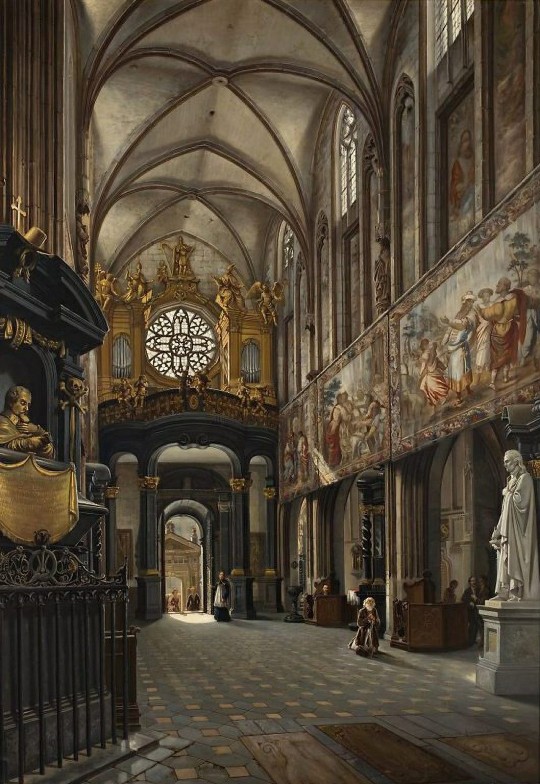
Saturnin Swierzynski (1820-1885), View of the Choir and the Nave in Wawel Cathedral, Kraków
125 notes
·
View notes
Photo
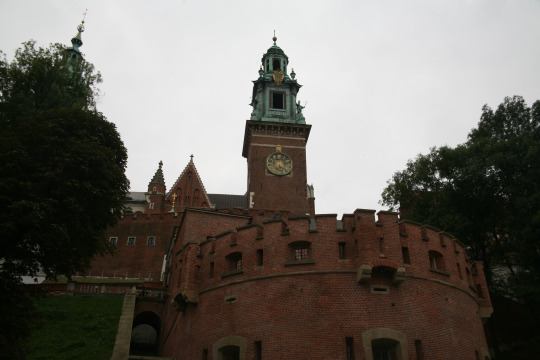
Wawel Royal Castle, 25.09.2021
#wawel#Wawel Royal Castle#WawelCastle#wawel castle#cathedral#Architecture#renaissance#renaissance architecture#castle#poland#polska#kraków#cracow#canon#photography#photographers on tumblr
35 notes
·
View notes
Text
Stare Miasto Kraków Poland

View On WordPress
#Bishop Stanislaus Patron Saint of Poland#Eyeless Head Sculpture Igor Mitoraj#Hejnał Mariacki Trumpet Signal#Igor Mitoraj Polish Artist and Sculptor#King Sigismund I the Old#Kraków Market Square#Kraków Old Town#Rynek Główny#Sigismund Bell#St. Mary&039;s Basilica Krakow#St. Peter & Paul&039;s Church Kraków#St. Stanislaus#Stare Miasto#Wawel Castle#Wawel Hill#Wawel Royal Cathedral
0 notes
Text
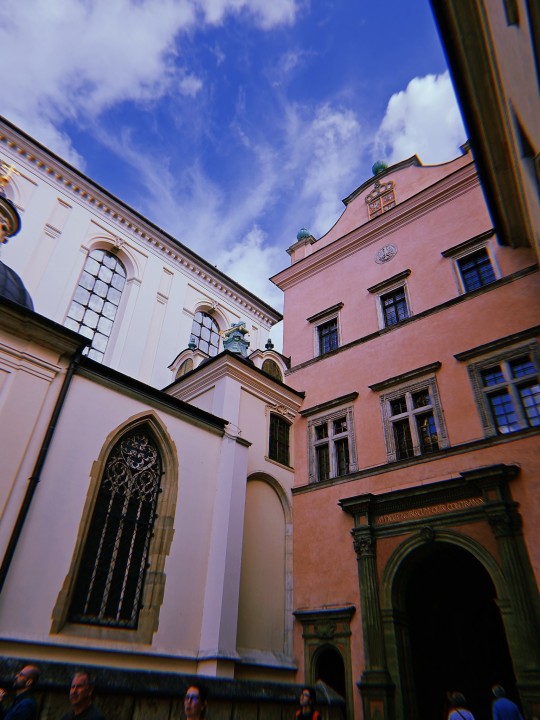
Krakow
#krakow#cracow#poland#polska#holiday#vacation#sun#summer#autumn#cathedral#castle#wawel#wawel castle#old town#medieval#hujicam#35mm film#photoblog#photography#follow#love#queue#grunge#hipster#nature#scintillatingmoments#romance#film camera#blue sky#talk to me
1 note
·
View note
Text

Conversion of St. Paul, section of the Trinity Altar of Wawel Cathedral, Polish, 1467
36 notes
·
View notes
Text




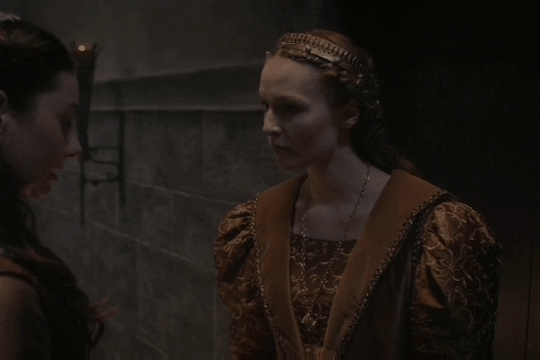
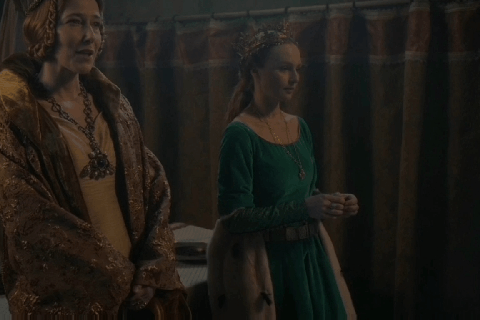
QUEEN ANNE OF CILLI (1386 — 21 may 1416)
Anne of Cilli was born probably in the 1386 as a daughter of William, Count of Cilli and Anne of Poland. Her father died when she was around ten years of age and her mother had remarried to Ulrich, Duke of Teck. Because of that, Anne was left under the care of her father's brother, Herman. According to the legend, in 1399 King Jadwiga of Poland on her deathbed told Władysław Jagiełło, her current husband, to marry Anne of Cilli so he could still rule Poland. Anne was a granddaughter of Casimir The Great, the last king from the Piast dynasty, so having a descendant of him as a wife would strengthen Władysław's position on the throne. One year later a delegation composed of Jan of Oblichów, Jan of Ostrowiec and Hinczka of Rogów came to Cilli with a proposition of marriage between King of Poland and Anne. Herman, Count of Cilli immediately agreed and in 16th July 1401 Countess come to Cracow. She was welcomed by Poles with joy, but according to the Jan Długosz her future husband wasn't that happy. The wedding was postponed and Anne sent to a convent to learn polish language. Finally in 29th January 1402, in the Wawel Cathedral, their wedding took place. There were many guests, including Vytautas, the Grand Duke of Lithuania. One year later Anne was crowned a Queen of Poland and was able meet her mother for the first time since the Duchess left Celje.
The marriage of Anne and Władysław was quite cold at the beginning. The king often left the capital, leaving his wife alone. He was also known to be suspicious, introverted person, so it took him a while to trust Anne. It also didn't help that the queen had been accused of marital infidelity several times. The first time was in 1407: Klemens of Moskorzew accused Anne of cheating on her husband with Jakub of Kobylan and Mikołaj Chrząstowski and the proof was supposed to be the sudden collapse of the floor in Queen's chamber. King at first believed in that and locked Jakub. Polish nobles during the convention in Niepołomice defended Anne and the woman was found innocent. But year later she was accused of having an affair with Andrzej of Tęczyn — this case did not reach a public hearing. In 1411 the Queen was accused of having the infidelity with archbishop Kurowski, but some sources says that actually Anne accused the man for a inappropriate attitude to her person. Kurowski died during a trip to the royal court to clear things up. For a first few years of marriage Anne of Cilli didn't give a birth to a child. It is known that she had several miscarriages. In the 1408 their first and only child, Princess Jadwiga, was born. Władysław was disappointed that the baby turned out to be a girl, but for a many years she was considered the heiress of the kingdom and a possible future king.
Anne hated the Teutonic Order as much as her husband and unlike her predecessor, urged Władysław to go to war with them. And he did that. In 1410 after the battle of Grunwald, Jagiełło sent two laters to inform about his victory: one of them was sent to Anne. It is the proof that their relationship develop during the years and Władysław started to like her and see as a friend and partner.
The Queen accompanied her husband during the trip to Hungary, where Jagiełło was negotiating with Sigismund of Luxembourg. There she met with her cousin, Barbara, who was the second wife of Sigismund. Thanks to Anne, the polish regalia, which King Louis The Great once brought with him to Buda, returned to Poland. Anne also visited Lithuania and observe the Christanisation of Samogitia. In early 1415 she travelled with her husband and even met Alexander of Moldavia in Sniatyn.
Anne came back to Cracow and Władysław travelled to Lithuania. Probably at the end of 1415, the queen got sick. In 1416 a special envoy was sent to king with a information that Anne was seriously ill. Despite the news, Jagiełło didn't hurry back to Cracow. He approached the capitol in May and few days later, 21th May 1416 the queen died. She was buried in the Wawel's Cathedral, near to altor of Saint Dorothy.
#historyedit#koronakrólówedit#korona królów#the crown of the kings#korona królów jagiellonowie#anne of cilli#anna cylejska
61 notes
·
View notes
Photo
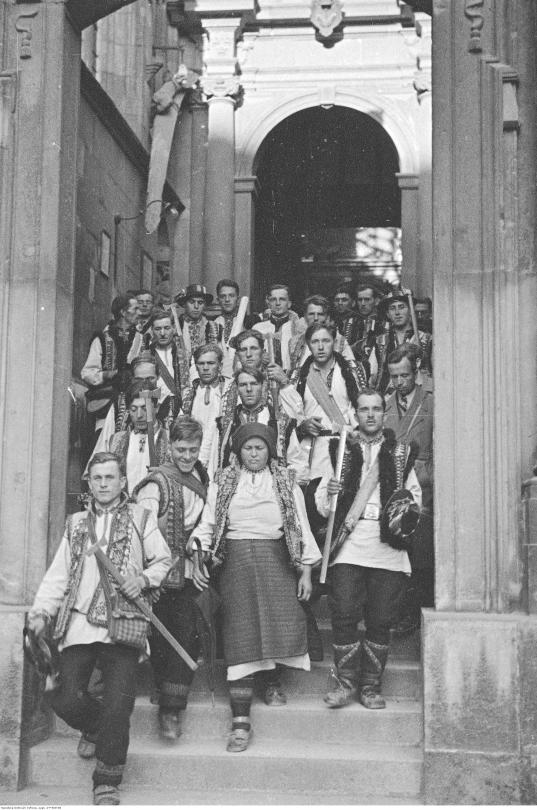
A group of Hutsul youth in popular costume leaves the Wawel Cathedral
Kraków, Poland, 1936
Koncern Ilustrowany Kurier Codzienny - Archiwum Ilustracji
Narodowe Archiwum Cyfrowe #1-F-460-30
65 notes
·
View notes
Text
SAINT OF THE DAY (October 22)
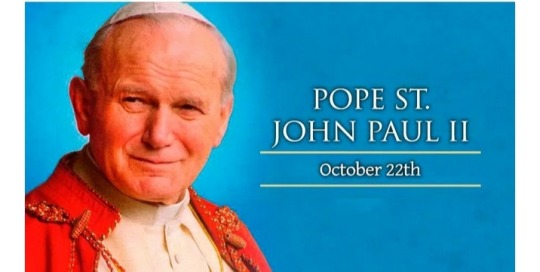
Saint John Paul II is perhaps one of the most well-known pontiffs in recent history.
He is most remembered for his charismatic nature, his love of youth and his world travels, along with his role in the fall of communism in Europe during his 27-year papacy.
Karol Józef Wojtyla, known as John Paul II since his October 1978 election to the papacy, was born in the Polish town of Wadowice, a small city 50 kilometers from Krakow, on 18 May 1920.
He was the youngest of three children born to Karol Wojtyla and Emilia Kaczorowska.
His mother died in 1929. His eldest brother Edmund, a doctor, died in 1932. His father, a non-commissioned army officer, died in 1941. A sister, Olga, had died before he was born.
He was baptized on 20 June 1920 in the parish church of Wadowice by Fr. Franciszek Zak, made his First Holy Communion at age 9, and was confirmed at 18.
Upon graduation from Marcin Wadowita high school in Wadowice, he enrolled in Krakow's Jagiellonian University in 1938.
The Nazi occupation forces closed the university in 1939 and young Karol had to work in a quarry (1940-1944).
He then worked in the Solvay chemical factory to earn his living and to avoid being deported to Germany.
In 1942, aware of his call to the priesthood, he began courses in the clandestine seminary of Krakow, run by Cardinal Adam Stefan Sapieha, archbishop of Krakow.
At the same time, Karol Wojtyla was one of the pioneers of the "Rhapsodic Theatre," also clandestine.
After the Second World War, he continued his studies in the major seminary of Krakow, once it had re-opened, and in the faculty of theology of the Jagiellonian University.
He was ordained to the priesthood by Archbishop Sapieha in Krakow on 1 November 1946.
Shortly afterwards, Cardinal Sapieha sent him to Rome where he worked under the guidance of the French Dominican, Garrigou-Lagrange.
He finished his doctorate in theology in 1948 with a thesis on the subject of faith in the works of St. John of the Cross (Doctrina de fide apud Sanctum Ioannem a Cruce).
At that time, during his vacations, he exercised his pastoral ministry among the Polish immigrants of France, Belgium and Holland.
In 1948, he returned to Poland and was vicar of various parishes in Krakow as well as chaplain to university students.
This period lasted until 1951 when he again took up his studies in philosophy and theology.
In 1953, he defended a thesis on the "Evaluation of the possibility of founding a Catholic ethic on the ethical system of Max Scheler" at Lublin Catholic University.
He became professor of moral theology and social ethics in the major seminary of Krakow and in the Faculty of Theology of Lublin.
On 4 July 1958, he was appointed titular bishop of Ombi and auxiliary of Krakow by Pope Pius XII.
He was consecrated by Archbishop Eugeniusz Baziak on 28 September 1958 in Wawel Cathedral, Krakow.
On 13 January 1964, he was appointed archbishop of Krakow by Pope Paul VI, who made him a cardinal on 26 June 1967 with the title of S. Cesareo in Palatio of the order of deacons, later elevated pro illa vice to the order of priests.
Besides taking part in Vatican Council II (1962-1965) where he made an important contribution to drafting the Constitution Gaudium et spes, Cardinal Wojtyla participated in all the assemblies of the Synod of Bishops.
The Cardinals elected him Pope at the Conclave of 16 October 1978. He took the name of John Paul II.
On October 22, the Lord's Day, he solemnly inaugurated his Petrine ministry as the 263rd successor to the Apostle.
His pontificate, one of the longest in the history of the Church, lasted nearly 27 years.
Driven by his pastoral solicitude for all Churches and by a sense of openness and charity to the entire human race, John Paul II exercised the Petrine ministry with a tireless missionary spirit, dedicating it all his energy.
He made 104 pastoral visits outside Italy and 146 within Italy. As Bishop of Rome, he visited 317 of the city's 333 parishes.
He had more meetings than any of his predecessors with the People of God and the leaders of Nations.
More than 17,600,000 pilgrims participated in the General Audiences held on Wednesdays (more than 1160), not counting other special audiences and religious ceremonies [more than 8 million pilgrims during the Great Jubilee of the Year 2000 alone], and the millions of faithful he met during pastoral visits in Italy and throughout the world.
We must also remember the numerous government personalities he encountered during 38 official visits, 738 audiences and meetings held with Heads of State, and 246 audiences and meetings with Prime Ministers.
His love for young people brought him to establish the World Youth Days.
The 19 WYDs celebrated during his pontificate brought together millions of young people from all over the world.
At the same time, his care for the family was expressed in the World Meetings of Families, which he initiated in 1994.
John Paul II successfully encouraged dialogue with the Jews and with the representatives of other religions, whom he invited several times to prayer meetings for peace, especially in Assisi.
Under his guidance, the Church prepared herself for the third millennium and celebrated the Great Jubilee of the Year 2000 in accordance with the instructions given in the Apostolic Letter Tertio Millennio adveniente.
The Church then faced the new epoch, receiving his instructions in the Apostolic Letter Novo Millennio ineunte in which he indicated to the faithful their future path.
With the Year of the Redemption, the Marian Year and the Year of the Eucharist, he promoted the spiritual renewal of the Church.
He gave an extraordinary impetus to Canonizations and Beatifications, focusing on countless examples of holiness as an incentive for the people of our time.
He celebrated 147 beatification ceremonies during which he proclaimed 1,338 Blesseds and 51 canonizations for a total of 482 saints.
He made Thérèse of the Child Jesus a Doctor of the Church.
He considerably expanded the College of Cardinals, creating 231 Cardinals (plus one in pectore) in 9 consistories.
He also called six full meetings of the College of Cardinals.
He organized 15 Assemblies of the Synod of Bishops — six Ordinary General Assemblies (1980, 1983, 1987, 1990, 1994, and 2001); one Extraordinary General Assembly (1985); and eight Special Assemblies (1980,1991, 1994, 1995, 1997, 1998 (2), and 1999).
His most important Documents include 14 Encyclicals, 15 Apostolic Exhortations, 11 Apostolic Constitutions, 45 Apostolic Letters.
He promulgated the Catechism of the Catholic Church in the light of Tradition as authoritatively interpreted by the Second Vatican Council.
He also reformed the Eastern and Western Codes of Canon Law, created new Institutions, and reorganized the Roman Curia.
As a private Doctor, he also published five books of his own: "Crossing the Threshold of Hope" (October 1994), "Gift and Mystery, on the fiftieth anniversary of my ordination as priest" (November 1996), "Roman Triptych" poetic meditations (March 2003), "Arise, Let us Be Going" (May 2004) and "Memory and Identity" (February 2005).
In the light of Christ risen from the dead, on 2 April A.D. 2005, at 9:37 pm, while Saturday was drawing to a close and the Lord's Day was already beginning, the Octave of Easter and Divine Mercy Sunday, the Church's beloved Pastor, John Paul II, departed this world for the Father.
From that evening until April 8, date of the funeral of the late Pontiff, more than three million pilgrims came to Rome to pay homage to the mortal remains of the Pope.
Some of them queued up to 24 hours to enter St. Peter's Basilica.
On April 28, the Holy Father Benedict XVI announced that the normal five-year waiting period before beginning the cause of beatification and canonization would be waived for John Paul II.
The cause was officially opened by Cardinal Camillo Ruini, vicar general for the diocese of Rome, on 28 June 2005. He was beatified on 1 May 2011.
On 27 April 2014, he was canonized by Pope Francis during a ceremony in St. Peter's Square.
In an April 24 message sent to the Church in Poland, Pope Francis gave thanks for the 'great gift' of the new Saint, saying of John Paul II that he is grateful, "as all the members of the people of God, for his untiring service, his spiritual guidance, and for his extraordinary testimony of holiness."
#Saint of the Day#Saint John Paul II#Pope John Paul II#Karol Józef Wojtyla#World Youth Day#World Meetings of Families#Great Jubilee of the Year 2000#College of Cardinals
10 notes
·
View notes
Text
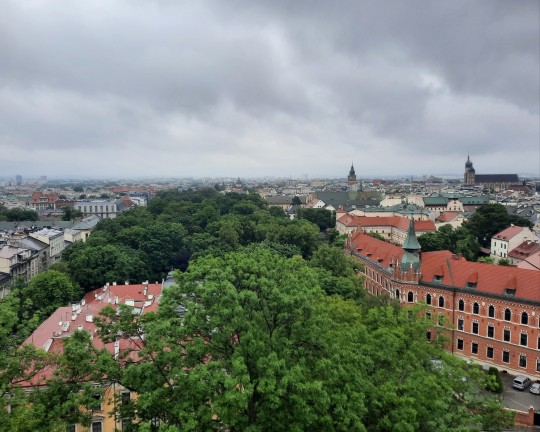



pieces of kraków, poland
view from katedra wawelska (the wawel cathedral) | rainbow flag hanging from a balcony | sunset above the street | view from kopiec kościuszki (the kościuszko mound)
5 notes
·
View notes
Photo
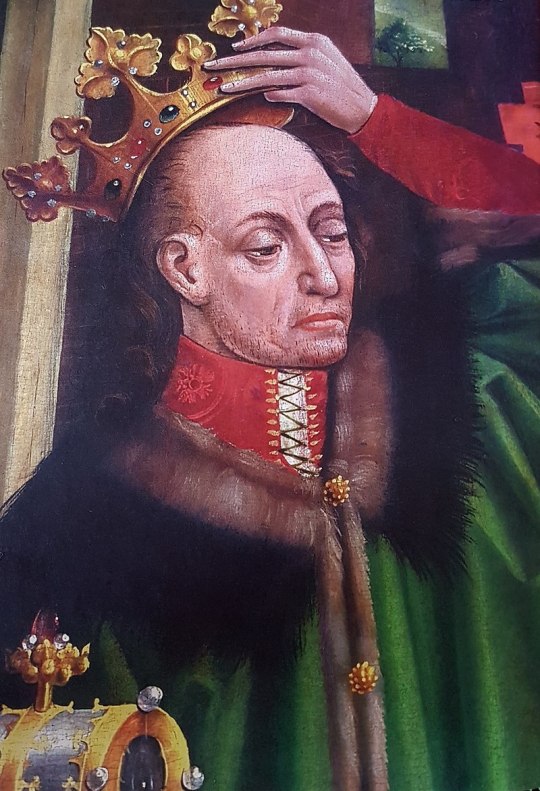
King Władysław II Jagiełło, detail of the Triptych of Our Lady of Sorrows in the Wawel Cathedral.
The Lithuanian Civil War of 1389–1392 was the second civil conflict between Jogaila, King of Poland and Grand Duke of Lithuania, and his cousin Vytautas. At issue was control of the Grand Duchy of Lithuania, then the largest state in Europe. Jogaila had been crowned King of Poland in 1386; he installed his brother Skirgaila as ruler of Lithuania. Skirgaila proved unpopular and Vytautas attempted to depose him. When his first attempt to take the capital city of Vilnius failed, Vytautas forged an alliance with the Teutonic Knights, their common enemy – just as both cousins had done during the Lithuanian Civil War between 1381 and 1384. Vytautas and the Knights unsuccessfully besieged Vilnius in 1390. Over the next two years it became clear that neither side could achieve a quick victory, and Jogaila proposed a compromise: Vytautas would become Grand Duke and Jogaila would remain Superior Duke. This proposal was formalized in the Ostrów Agreement of 1392, and Vytautas turned against the Knights. He went on to reign as Grand Duke of Lithuania for 38 years, and the cousins remained at peace.
#Lithuanian Civil War#Władysław II Jagiełło#Jogaila#Vytautas#House Jagiellon#lithuanian history#civil war#XIV century#paintings#art#arte
5 notes
·
View notes
Text

Saturnin Swierzynski (1820-1885), View of the Aisle in Wawel Cathedral, Kraków
31 notes
·
View notes
Text
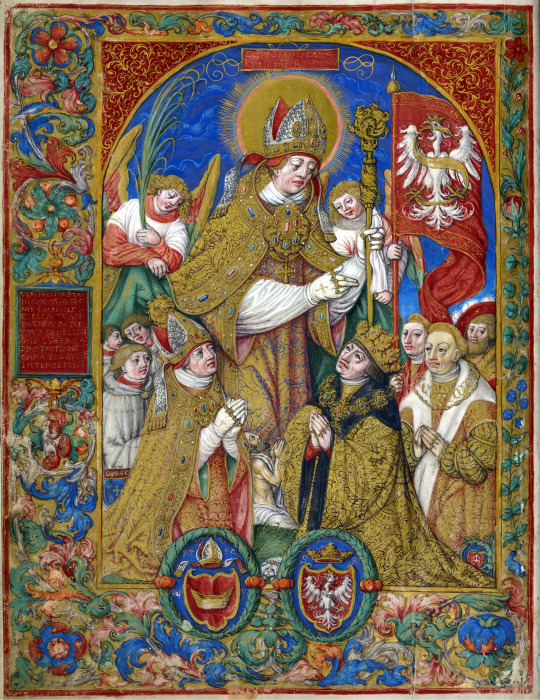
THE DESCRIPTION OF SAINT STANISLAUS OF SZCZEPANOW
The Patron of Moral Order
Feast Day: April 11
The bishop of Krakow and the first Polish-born saint, was born on July 26, 1030 in Szczepanow, an administrative district of Gmina Brzesko, within Brzesko County, Lesser Poland Voivodeship, in southern Poland.
The only son of the noble and pious Wielisław and Bogna, who are both died, who has consecrated him to the Lord, Stanislaus gave away everything to the poor to become a priest. He was ordained priest by Lambert II Sula, the bishop of Krakow, whom he succeeded in 1072, but accepted the office only at the explicit command of Pope Alexander II. He visited his parishes every year, bringing about a spiritual renewal among the clergy and the laity. His house was always crowded with the poor, and he kept a list of widows and miserable people to whom he systematically distributed alms.
Poland, at that time, was ruled by King Boleslaw II the Generous (Boleslaw the Bold), who had kidnapped a married woman to satisfy his lustful desires. Considering the stubborness of the king, the bishop had no choice but to issue a sentence of excommunication. When Boleslaw entered the Krakow Cathedral (now Wawel Cathedral and formally titled the Royal Archcathedral Basilica of Saints Stanislaus and Wenceslaus), he found that the services were at once suspended by the order of the bishop.
Furious with rage, he pursued Stanislaus to the little chapel of St. Michael outside the city, and killed him while celebrating Mass. The guards then cut the body into pieces and scattered them to be devoured by wild beasts. Stanislaus was martyred on April 11, 1079 at the age of 48, and his relics were placed in the Wawel Cathedral.
#random stuff#catholic#catholic saints#stanislaus of szczepanów#stanislaus of szczepanow#estanislao de cracovia#moral order#poland
0 notes
